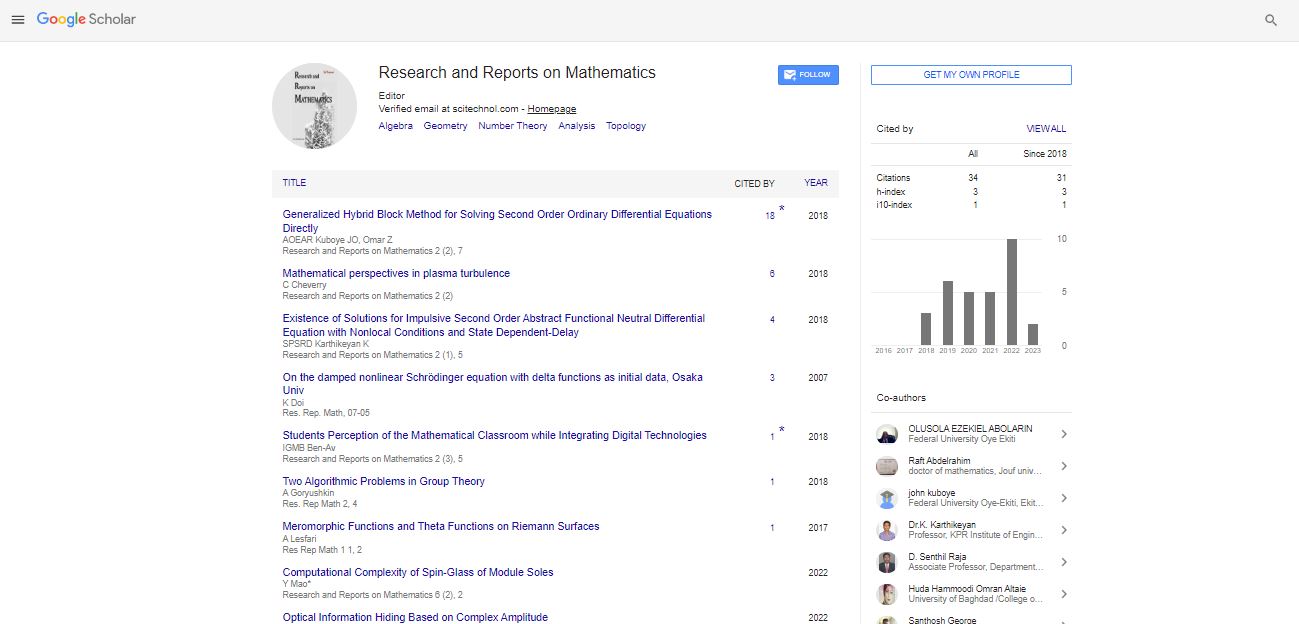Editorial, Res Rep Math Vol: 5 Issue: 4
Real-Valued Systemic Measures
Shaik Azeem*
Department of Mathematics, University of Milan, Italy
- *Corresponding Author:
- Shaik Azeem
Department of Mathematics, University of Milan, Italy
Tel: 8519974606
E-mail: azeemshaik786@gmail.com
Received Date: April 13, 2021; Accepted Date: April 15, 2021; Published Date: April 17, 2021
Citation: Azeem S. (2021) Real-Valued Systemic Measures. Res Rep Math 5:1.
Copyright: © All articles published in Research and Reports on Mathematics are the property of SciTechnol, and is protected by copyright laws. Copyright © 2021, SciTechnol, All Rights Reserved.
Abstract
We describe the axiomatic approach to real-valued Systemic Measures, which may be a natural counterpart to the nowadays classical univariate theory initiated by Artzner et al. within the seminal paper “Coherent measures of risk”, Math. Finance, (1999). Especially, we direct our attention towards Systemic Risk Measures of shortfall type with random allocations, which consider as eligible, for securing the system, those positions whose aggregated expected utility is above a given threshold. We present duality results, which permit us to motivate why this particular risk measurement regime is fair for both the only agents and therefore the whole system at an equivalent time. We relate Systemic Risk Measures of shortfall type to an equilibrium concept, namely a Systemic Optimal Risk Transfer Equilibrium, which conjugates Bühlmann’s Risk Exchange Equilibrium with a capital allocation problem at an initial time. We conclude by presenting extensions to the conditional, dynamic framework. The latter is that the suitable setup when additional information is out there at an initial time.
Keywords: Systemic, Risk, Measures, Fairness, Equilibrium, Dynamic.
Keywords
Systemic Risk; Risk Measures; Fairness; Equilibrium; Dynamic Risk Measures
Introduction
Both the financial crisis started in 2007 and therefore the dramatic economic shocks associated with the COVID-19 pandemic have brutally proved the partial inadequacy of past approaches to the management of risk for complex systems of interacting entities. It’s become more and more evident how deep interconnectedness played a serious role in propagation of risk in the least levels, from smaller businesses to large scale multinational entities. The literature on systemic risk has widely focused on modeling the structure of monetary networks, aiming at portraying the spread of shocks (both exogenous and endogenous) within the systems. These models assume a more or less detailed knowledge of balance sheets of institutions (interbank network and exposures, recovery rate at default, liquidation policy, bankruptcy costs, cross-holdings, leverage structures, fire sales, and liquidity freezes). As acknowledged in however, once such models are implemented, “one still has got to understand the way to compare the possible final outcomes during a reasonable way or, in other words, the way to measure the danger carried by the worldwide economic system .” we’ll adopt here an axiomatic approach, which addresses specifically this problem. Essentially, this axiomatic approach identifies suitable maps related to a risky position for the system (i.e., a vector of monetary positions) one amount (namely, a true number). Such an amount, intuitively speaking, summarizes the general risk of the system. The literature on systemic risk is nowadays very vast and growing. For empirical studies on banking networks, one might check out The works study interbank lending with a mean field approach and using interacting diffusions. Concerning systemic risk modeling, we mention among the various contributions for a classical contagion model, a default model, for illiquidity cascade models, for an asset fire sale cascade model, and for a model which incorporates crossholdings. Further works on network modelling are We refer the reader for an in depth overview on the literature on systemic risk.
In this work, we’ll mostly specialise in real-valued Systemic Risk. Measures, which are studied in recent works inspired by the axiomatic approach to univariate monetary Risk Measures of An alternate, set-valued approach has also gained significant attention within the literature, as testified, for instance , by the recent “Special Issue on Vector- and Set-Valued Methods in Stochastic Finance and Related Areas” (Finance Stoch. Volume 25, issue 1, January 2021).
By its own very nature, the classical framework of allows for explicitly modeling the mechanism of injecting capital so as to form risky positions acceptable and thus seems a natural environment for treating the systemic case. The classical setup is static, with deterministic amounts exchanged at initial times and random events that happen at a terminal time T. To simplify the presentation, we’ll assume a zero rate of interest, e.g., the time T amounts are already in discounted terms. The presences of additional information are often modeled by replacing the initial trivial sigma algebra, of the static case, with a general one. Thus, we’ll depict the extension of the idea of Systemic Risk Measures to a dynamic, multiperiod framework. Before discussing this subject, we’ll elaborate some details on the static case, which help with developing the intuition of the most concepts with less technicalities.
 Spanish
Spanish  Chinese
Chinese  Russian
Russian  German
German  French
French  Japanese
Japanese  Portuguese
Portuguese  Hindi
Hindi 